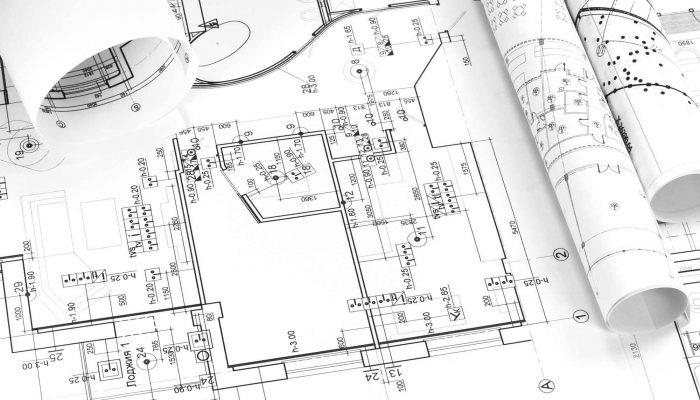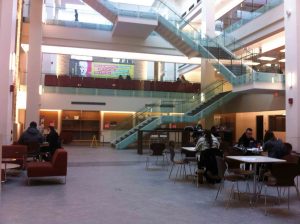Learn about the benefits of constructing a multi-year internship from a MLIS student's perspective.

Project Goldilocks: Getting Library Learning Space “Just Right”
During the 2014 fall term I assisted with student and faculty focus groups, which sparked an interest in the way library space design can impact student learning. At the time I was completing an eight-month co-op at the Huron University College library, an affiliate of Western University.
The students shared their experiences searching out nooks and crannies across both Huron and Western campuses that would be good study spaces. Students loved the space on Western’s main campus in the Physics and Astronomy building because of the open concept layout, glass staircase, and standing height desks.

After attending and transcribing the focus groups, I had immersed myself in the student story. I decided to extend the experience by putting my backpack and student hat back on – something that wasn’t hard, as I had only been working for the past five months – and I went and I searched out the nooks and crannies.
With each space I went to I put myself in the student perspective, and I approached each new space with a student’s eye. Sitting in all of these spaces I asked myself “how does this space make me feel?” and “what happened to my motivation since spending time here?” My experience, as well as students’ responses, seems to suggest that how we feel in a certain environment has an important part to play in the way that we work—that the right space can enhance a learner’s performance.
After my involvement in the focus groups, I believe that collaborating with students is incredibly important. Not only for the insights that it provides, but also because it is a way to engage with students and send the message that you care about their needs. Students in the focus group were happy to hear that their input might actually go into the build when it happens, which creates a sense of trust between students and librarians. Focus groups are an important tool to identify preferred learning spaces, discover what it is about those spaces that students enjoy, and to possibly come back with some ideas to try in the library.
While there is a lot of discussion surrounding learning commons and you can certainly incorporate current trends, I think that to create productive learning spaces for students, collaboration with students is key. Let students have their say – ask them if they were to design the perfect library what would it look like? Asking questions can provide insights librarians need and you just might be surprised by the answers.
Just as professors use a mix of styles in their teaching to increase their success of reaching students with different learning styles, the same can be applied to space design and by creating a more varied space experience you have a better shot of appealing to all learners.
Most importantly, there’s no one size fits all – getting library space just right means talking to and involving students from your community in the design. I encourage you to find your students’ stories.
Michelle Haugner is an MLIS student at Western University currently completing a co-op at the Huron University College library. After graduation, Michelle would like to pursue a career as an academic librarian where she can enhance learner’s success and make the university experience a more engaging one. She can be contacted at michellehaugner [at] gmail.com. This article was based on a Lightning Strikes session at the Super Conference 2015.


